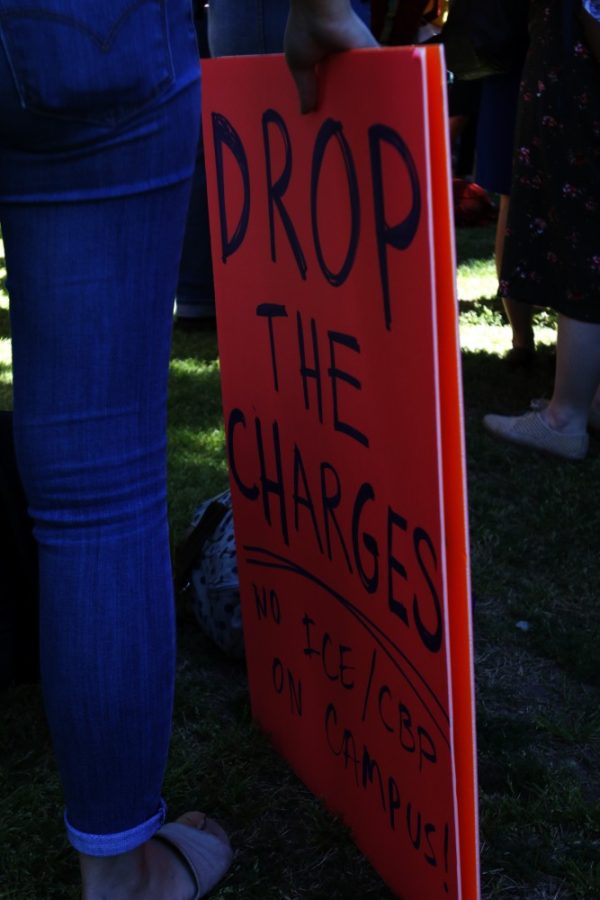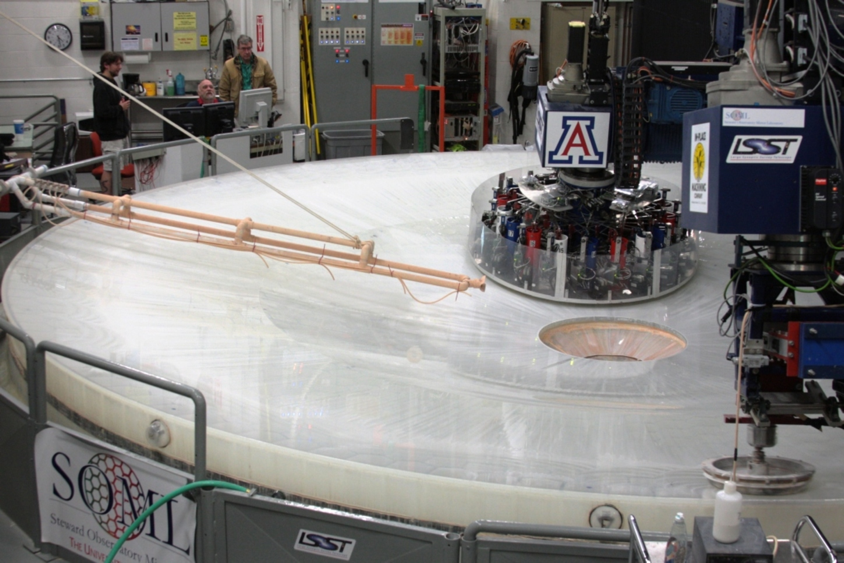Misdemeanor charges against each of the “Arizona 3” — three University of Arizona students made infamous in a viral video capturing their encounter with U.S. Customs and Border Protection agents during a March club meeting — were dropped, according to the Pima County Justice Court website.
On Friday, motions to dismiss charges of interfering with an educational facility against each student were granted.
“The Pima County Attorney’s Office filed motions to dismiss without prejudice the charges that had been filed … against three University of Arizona students relating to those students’ encounter with Border Patrol agents as well as with other students hosting the event where the Border Patrol agents had been invited to speak,” said Amelia Cramer, chief deputy in the Pima County Attorney’s Office, in an email.
Denisse Moreno Melchor, the student who filmed the encounter, also had a charge of threats and intimidation dropped.
Because of threats and their unwillingness to seek public attention, the Daily Wildcat is withholding the names of the other students involved due to safety concerns.
In a joint statement from the three students issued Monday, March 22, on Facebook, the group jointly claimed “victory” and thanked supporters for campaigning for their case dismissals.
“We know that this was only made possible by the massive community support we have received, both on campus and off,” the statement read.
They also chastised the UA Police Department and President Dr. Robert C. Robbins for filing charges and continuing to pursue university-sanctioned punishments against the three.
“It is important that we still demand all punitive measures against us permanently cease,” the statement read. “We want an apology from President Robbins and a promise that he will never again jeopardize the safety or free speech of students in service of Border Patrol.”
Spokesperson for the UA Chris Sigurdson did issue an email response acknowledging the county’s decision.
“We respect the decision and will continue to follow our processes and the law. The University is moving forward with the Dean of Students’ process review of the incident per our policies,” Sigurdson wrote.
According to Cramer, the PCAO was informed by the university that “victims” will have an opportunity to participate in the university’s administrative process.
As of publication, it was unclear if any members of the Criminal Justice Association or either of the two Border Patrol agents have elected to participate in any UA-initiated hearings.
The investigation
Last week, the University of Arizona Police Department closed the case into the three students. It revealed a chaotic scene in and outside Modern Languages Room 304 on March 19, where the Criminal Justice Association, a club for students interested in careers in law enforcement, was holding its meeting.
Of note was the revelation the first officers on scene failed to get the names of any of the protesting students and only learned those details through use of social media and depending on witnesses to provide information.
The report also detailed UAPD efforts to track the Arizona 3. In order to find the students, police combed the internet and social media, comparing photos to still shots taken from the video recorded on Moreno Melchor’s phone.
For example, on March 22 a UAPD crime analyst detailed finding a seven-second video on YouTube posted by a user whose name is redacted. The video shows people standing outside in a hallway chanting “MURDER PATROL,” according to the officer’s report.
“The caption to the video is as follows: ‘My class had to evacuate our class because of these two. We legit felt uncomfortable having class as this happened,'” the officer reported. The video was entered into evidence.
The next break in the investigation would come from a March 25 letter to the UA from Judicial Watch, a conservative activist group that “promotes transparency, accountability and integrity in government, politics and the law,” according to its website.
The letter, which named Moreno Melchor, is referenced in the report as coming to the department’s attention on March 27, and officers rushed to match still shots taken from the original video against social media pages matching her name.
The incident, and its fallout
After Moreno Melchor posted footage of the March 19 encounter on social media, the video was picked up by conservative media sites like the Daily Caller as an example of “berserk” liberal college students intolerant of opposing views.
Still, local reaction was supportive of the three students’ action.
A March 21 letter from the Associated Students of the University of Arizona said the presence of armed Border Patrol agents for the Criminal Justice Association event had a harmful effect on members of DACA and other communities without documentation on campus.
“Every single UA student, faculty and staff deserves the right to feel safe within our campus community,” the letter read.
Then Robbins responded on March 22 with what would be the first of three university-wide emails.
In this first response, Robbins acknowledged there were differing opinions on the interaction but said his first duty was to protect students.
“Ensuring safety can take many forms,” Robbins said. “Including providing an environment where students feel the university will support them.”
Soon, however, pressure in the form of a letter from Judicial Watch, co-signed by National Border Patrol Council Vice President Art Del Cueto, arrived. Then Robbins issued his second response.
While the first letter seemed to focus on Robbin’s commitment to UA students, the second, issued on March 29, affirmed the UA’s commitment to its relationship with the Border Patrol. Robbins also confirmed further action was being taken by UAPD against students involved.
“The student club and the CBP officers invited by the students should have been able to hold their meeting without disruption,” Robbins said. “Student protest is protected by our support for free speech, but disruption is not.”
A few days later, April 1, misdemeanor charges would be issued against Moreno Melchor and another of the Arizona 3. A few days later, the third student was charged.
During that same week, Art Del Cueto spoke before UA conservative groups and a throng of protestors clad in “Murder Patrol” shirts, and online threats related to the case forced the evacuation of the Department of Mexican American Studies on the second floor of the Cesar E. Chavez Building.
Campus Conversations up next
On April 3, Robbins issued his final letter. This time, Robbins offered a chance for the UA and Tucson communities to reconcile their opinions on the incident. He proposed a series of town hall-like events, dubbed “Campus Conversations.”
“These events will be discussions of how our free speech rights can be modeled on a college campus,” he said. “In other words, our campus is a marketplace of ideas, and there is no better place to introduce and debate these highly emotional and sensitive issues.”
Well the number of events is currently unclear, the first Campus Conversation is scheduled for tomorrow from 9-11 a.m. in the Student Union Memorial Center Grand Ballroom.
In anticipation of the April 23 event, the UA sent an email explaining how members of the public could attend or tune in, as well as ask questions:
1. In person, two-minute comments using designated microphones.
2. Handwritten, on designated comment cards distributed by volunteers.
3. Via an online survey for those who cannot be present. This link will be active during the event.
It also provided a link to stream proceedings for those unable to attend.
Follow Eddie Celaya on Twitter









